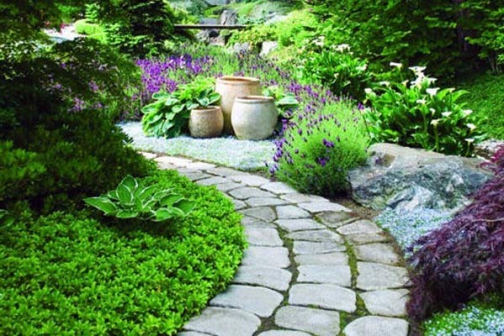
The wild or natural garden has its place in the range of garden styles. They are the most informal of informal gardens, a natural choice for any lover of nature who is faced with an overgrown and unkempt site or new and uncultivated conditions.
If your garden is already structured and neatly landscaped, trying to create a natural garden from scratch could be a daunting task. You can, however, always include a wild corner within a more conventional garden. Here are some tips to help you put up a garden or a corner inspired by nature:
Simulate nature
The aim of creating a natural garden is to simulate nature as closely as possible. Forget formal lawns, flower beds, walls, fences and paths. Moreover, struggling hedges and a few weeds are acceptable as part of the wild setting. These attributes make nature inspired gardens a lot easier to develop and maintain. However, the need to have a well ordered and functional landscape is never lost. Careful planning is essential to ensure that this is achieved.
Planning
Take your cue from nature when planning a natural garden. Let the soil and natural conditions determine the kind of garden you make. You may need to clear the site of undergrowth, rubble and rampant weeds, but do not attempt any changes in level. Soil conditions may also need to be improved, but again do not make any major changes.
The natural effect is brought about largely by careful selection, association and positioning of plants and features such as rock outcrops, a fallen tree trunk, a stream or a waterfall. While these can be artificially introduced, they must be made to look as if they belong in their surroundings by the use of local materials.
Paths in a natural garden can be mere tracks, perhaps only with stepping stones. Simple stone or brick walls or a short post and rail fence softened with shrubs or climbers will make for boundaries whenever they are absolutely necessary.
Planting schemes
You can build up a planting pellet from ideas derived from plant associations observed in the surrounding natural landscapes. Take cues from existing conditions in your site. Your goal will be to accentuate and enhance interesting aspects of the natural site rather than trying to change them. You can, for instance, plant grasses or marsh plants in low spots or rock plants in rocky places.
It may help to visit a reputed local nursery and ask for native wild plants suitable for your natural garden. You may also combine these natives with garden varieties and suitable hybrids for additional colour and interest. However, care should be taken to include only plants that naturally grow well in your area. Too much cultivation will make a wild garden lose its natural appearance.
It is usually necessary to have an area that is less wild to serve as a link with the more formal areas in the home such as the house itself or other outdoor living areas. Such transitional areas can be planted with rough grass and annual beds but never straight hedges and trimmed borders.
 The Standard Group Plc is a
multi-media organization with investments in media platforms spanning newspaper
print operations, television, radio broadcasting, digital and online services. The
Standard Group is recognized as a leading multi-media house in Kenya with a key
influence in matters of national and international interest.
The Standard Group Plc is a
multi-media organization with investments in media platforms spanning newspaper
print operations, television, radio broadcasting, digital and online services. The
Standard Group is recognized as a leading multi-media house in Kenya with a key
influence in matters of national and international interest.
 The Standard Group Plc is a
multi-media organization with investments in media platforms spanning newspaper
print operations, television, radio broadcasting, digital and online services. The
Standard Group is recognized as a leading multi-media house in Kenya with a key
influence in matters of national and international interest.
The Standard Group Plc is a
multi-media organization with investments in media platforms spanning newspaper
print operations, television, radio broadcasting, digital and online services. The
Standard Group is recognized as a leading multi-media house in Kenya with a key
influence in matters of national and international interest.









